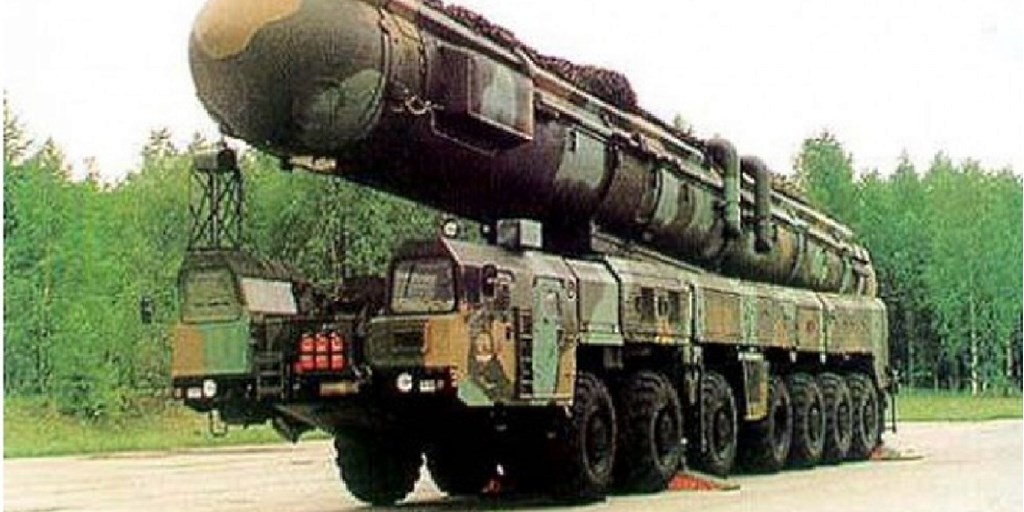
China is developing the CSS-X-20 (DF-41), a new road-mobile
ICBM possibly capable of carrying a MIRV payload. China appears to be
considering additional DF-41 launch options, including rail-mobile and silo
basing. The DF-41, which is expected to have a range of about 14,000 kilometers
and be mobile. China has conducted several tests of the DF-41 but has yet to deploy
the missile. The number of warheads on Chinese ICBMs capable of threatening the
United States is expected to grow to well over 100 in the next 5 years.
China has still not completed development of the
long-awaited DF-41 ICBM (CSS-X-20), which has been reported in development at
least since 1997. The US Defense Department believes that this missile is
capable of carrying MIRVs and rumors have spread in the media that the DF-41
can carry six to 10 warheads.
As is likely the case with the DF-5B, though, the number of
warheads that the DF-41 carries may be significantly less––perhaps three––and
the additional payload capability may focus on decoys and penetration aids to
overcome the US ballistic missile defense system. The PLARF conducted its tenth
test of the DF-41 in May 2018 and followed it up with a simulated second-strike
exercise in January 2019, which may have included the DF-41.
This could indicate that the missile has nearly completed
its development and testing cycle; however, the missile is not yet listed as
operational in the 2019 Defense Department report. The DF-41 is expected to
eventually replace the aging DF-5 ICBM and could potentially be launched from
silos and railcars, in addition to mobile TELs.
China will put its most powerful intercontinental ballistic
missile into service as early as this year, according to a regional defence
magazine.
The DF-41, which was described by Washington as the world’s
longest-range missile, has entered its final test phase, according to
Canada-based Kanwa Asian Defence.
With an operational range of up to 14,500km, the DF-41 would
first be deployed to the advanced brigade of the People’s Liberation Army’s new
Rocket Force based in Xinyang in Henan province, the report said.
From there, the missile would be able to strike the United
States within half an hour by flying over the North Pole or slightly more than
30 minutes by crossing the Pacific, the report said.
But defence analysts said it was not clear if the DF-41
could break through the multilayered US missile defence system in the
Asia-Pacific region.
“No one questions the longest range of the DF-41 is near
15,000km. But within just a few minutes of being launched, it might be blocked
by the US’ defence system at its Guam naval base,” Professor He Qisong, a
defence policy specialist at the Shanghai University of Political Science and
Law, said.
The solid-fuel, road-mobile ICBM had been tested at the
Wuzhai Missile and Space Test Centre – also known as the Taiyuan Satellite
Launch Centre – in Shanxi province since last summer, the Kanwa report said.
The DF-41 has been tested at least five times since July,
2014, according to the US-based Washington Free Beacon.
Earlier reports from the website said US intelligence
agencies had detected that the PLA’s missile force submitted a DF-41 missile to
a “canister ejection test” from a railway-mounted mobile launcher on December
5.
The test was a milestone for Chinese strategic weapons
developers and showed that Beijing was moving ahead with building and deploying
the DF-41 on difficult-to-locate rail cars, in addition to previously known
road-mobile launchers, the website said.
Kanwa chief editor Andrei Chang said the strike rate of the
DF-41 would improve further after 2020 when China completed its home-grown
BeiDou navigation satellites, helping to wean the PLA off its dependence on the
US’ Global Positioning System.
But He said the US might develop technology to jam the
BeiDou system’s signals.
“The US has spared no effort to upgrade its missile defence system year after year,” He said. “The missile systems – so far – are just a game of threats played among the great powers.”
Missile Defense Project, “Dong Feng 41 (DF-41 / CSS-X-20),” Missile Threat, Center for Strategic and International Studies, August 12, 2016, last modified June 15, 2018, https://missilethreat.csis.org/missile/df-41/.
Original Post Thai Military and Asian Region